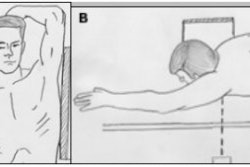PHILADELPHIA - The diversion of outpatient imaging studies from hospitals to freestanding imaging centers can apparently be achieved without reducing the quality of service, said Dr. Thomas Dehn, executive vice president and chief medical officer of National Imaging Associates (NIA).
Insurance companies are increasingly taking a hard look at diagnostic imaging spending; their careful scrutiny of radiology services won't fade away any time soon, according to Dehn.
"If you're in the freestanding healthcare business I think you're in the right place," he said.
Dehn made his comments during a talk on reconciling quality medicine and profitability in imaging centers at the Advancing Radiology Imaging Services and Operations meeting. NIA is a Hackensack, NJ-based radiology management firm that provides imaging preauthorization services for managed care clients.
In his talk, Dehn presented a case study evaluating outpatient diagnostic radiology costs and utilization experience of a health plan NIA works with. Claims data from services incurred between January 2000 and December 2002 were included, and claims were submitted for incurred but not reported (IBNR) services based on claims payment experience.
Angiography and interventional studies, bone density scans, CT scans, diagnostic nuclear medicine and PET, fluoroscopy, MRI and MR angiography, nuclear cardiology, ultrasound, and plain-film studies were included. Charges and per-member, per-month (PMPM) rates were measured on an allowable basis. Utilization was calculated in procedures per 1,000 members using professional and global modifiers.
Radiology utilization is undoubtedly on the rise. With the introduction of new technologies and new uses for existing technologies, NIA tells its clients they can expect a radiology utilization percentage increase in at least the high single digits, Dehn said.
There's a dichotomy, however, between volume growth and PMPM spending. For example, NIA found a 9.4% utilization increase of MRI in the health plan case study, but PMPM spending growth of 19%. This trend was attributable to increases in unit costs, which can occur from factors such as a shift in location to a more expensive site or a fee increase, Dehn said.
"Well, there aren't a lot of fee increases happening these days," he said. "So if you see these increases in unit cost, it will be frequently done because there's a significant amount (being shifted) to a higher-priced facility."
CT showed 10.6% utilization growth, with 28.3% in PMPM increases. Utilization of nuclear cardiology procedures climbed 22.1% from 2001 to 2002 in the health plan, with a 7.9% increase in PMPM spending.
Dehn said that nuclear cardiology has been virtually completely lost by radiologists, with over 80% of nuclear cardiology now performed by cardiologists. And most of the exams are done in their offices, leading to a big self-referral issue, Dehn said.
One modality often flying under the utilization radar screen is diagnostic ultrasound, which showed a 37% PMPM spending increase from $1.58 in 2001 to $2.16 in 2002, Dehn said. Thanks to the availability of low-cost, high-quality ultrasound machines, a lot of non-radiologists are now performing ultrasound studies.
"OB ultrasound (radiologists) have pretty well lost," he said. "Obstetricians and gynecologists do ultrasound and they're probably in over their head in a lot of cases, but they do it reasonably well. But what's happening now is that primary care physicians are buying ultrasound machines, they're waving the wand and they're printing money. You've got to be pretty darn skilled to read ultrasound even though the equipment has really markedly improved. (To) have marginally competent people doing ultrasound, billing for it, and getting paid for it is really a travesty."
Overall, the health plan's PMPM imaging spending for commercial lives climbed from $14.37 in 2001 to $18.20 in 2002. Of this difference $0.81 was attributed to increases in advanced imaging (CT, MRI, nuclear cardiology, and PET) utilization, while $0.77 was due to use of other procedures.
The lion's share, $2.25, was caused by an increase in unit price/procedure mix.
"What's happening is that you're doing less foot films and more foot MRI, and less knee films and more knee MRIs," he said.
Among other findings, MR studies were performed in the office, or in the freestanding environment, in 51% of cases in 2001, climbing to 53% in 2002. CT studies were provided in offices in 12% of cases in 2001, and 13% in 2002.
The average global cost per MR exam was $440 in the office, or freestanding environment, and $1,303 for the hospital. CT's average cost was $271 for office cases, while hospital-based exams averaged $656, Dehn said.
Steering patients
Given the significant cost differential, hospitals will likely turn to companies like NIA to help redirect imaging studies to offices, Dehn said. NIA employs a call center approach for prior authorization of imaging procedures. When a call comes in, the request is subjected to an algorithm, and if the request is approved, then the referring physician is asked what imaging center they'd like to send the patient to.
"You have to know that if (the hospital) is sitting there not as a provider, but now as a purchaser of healthcare, (they're) going to say, ‘Tell me first of all, is the office is doing as well quality-wise as the hospital is?’" he said. "And if you can tell me the (diagnostic imaging) quality is the same, (the hospitals will say) we want you to redirect (studies) to the office," he said.
Eight or nine years ago, imaging centers often had marginal, often used equipment, and the argument couldn't be made that the quality was the same. But that has changed, he said.
Historically the tactic of steering patients to certain sites has not been particularly successful. Preferred provider organization (PPO) patients, however, will likely more and more be forced to pay almost punitive co-pays, say $200 or more, to go to a different location than requested, Dehn said.
"It's not easy to steer a patient from one place to another, but you're going to see more of that," he said.
Using the call center for authorization of imaging procedures led to an estimated clinical yield, including denials and withdrawals of imaging requests, of 11.5% in 2002, saving an estimated $1.9 million, or $.95 PMPM for the health plan.
NIA uses a proprietary performance feedback tool to measure the appropriateness of imaging examinations through a CPT-4 to ICD-9 code-pairing system. Using that filter, NIA determined that the health plan's advanced imaging appropriateness increased 7% from 46.1% in 2001 to 53.1% in 2002, Dehn said.
"The point is, you can ... shift examinations from one setting to another setting, and, at least on the basis of this measure, not apparently compromise quality of care," he said.
By Erik L. RidleyAuntMinnie.com staff writer
April 3, 2003
Related Reading
Adding vascular surgeon to IR team brings growth in practice volume, March 31, 2003
Billing blues: Eliminating denials for imaging services, March 13, 2003
OIG says Medicare needs more parity in outpatient service fees, February 7, 2003
Copyright © 2003 AuntMinnie.com


















